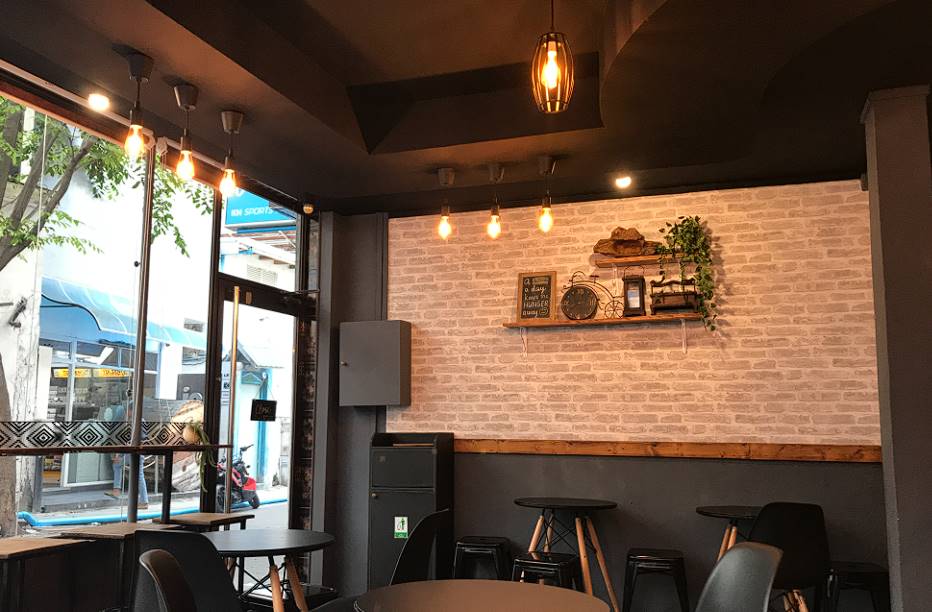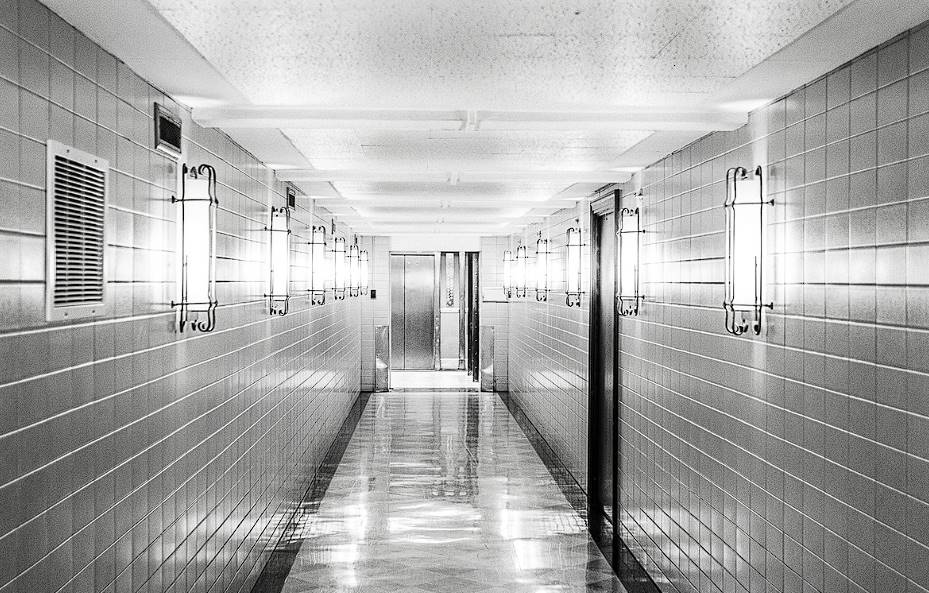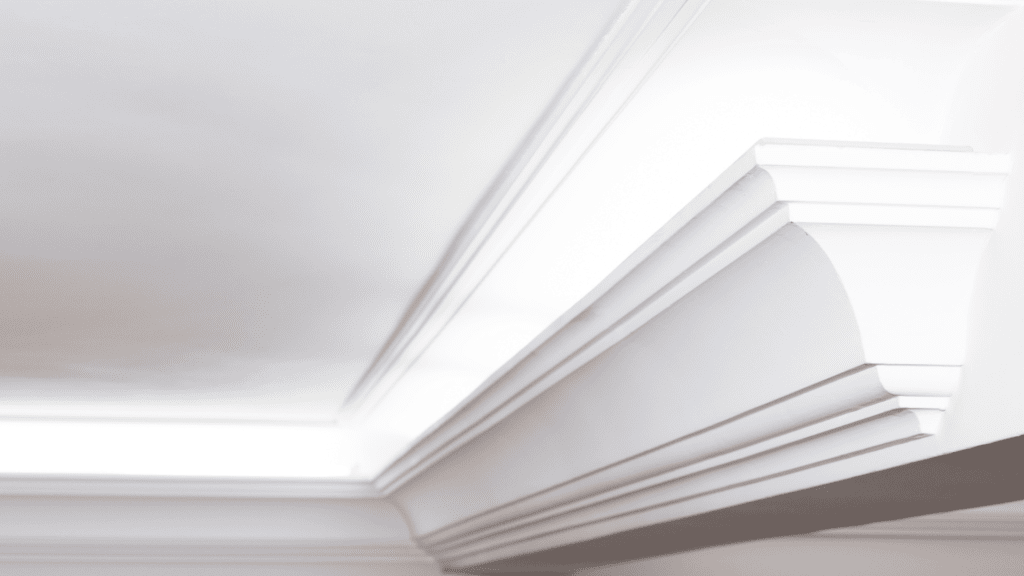Do you immediately notice how well it sounds when you first enter a room? Maybe you've been in a room where the noise keeps echoing, and it's hard to have a normal discussion. The construction and design of the ceiling is the key component in creating these aural environments. Because of their usefulness in reducing ambient noise and enhancing speech intelligibility, acoustic ceilings—also called soundproof ceilings or drop ceilings—have become more common in various environments.
Like any other architectural element, acoustic ceilings have pros and cons that should be weighed carefully before being installed. This article will discuss the benefits and drawbacks of acoustic ceilings so that you can make an educated decision when designing your area. In addition, improve the sonic setting as a whole.
To improve speech intelligibility and decrease echoes, acoustic ceilings are installed. These ceilings effectively absorb and reduce sound waves because they comprise sound-absorbing materials like mineral fibres or perforated panels. Acoustic ceilings improve the quality of sound in space by reducing the noise that echoes off of walls and carries from room to room. While these ceilings function exceptionally well in reducing noise, they may need to be more aesthetically pleasing. It is important to find a happy medium between practicality and aesthetics.
However, these are only some things to consider when deciding whether acoustic ceilings are right for your room. Detailed arguments for and against, including a discussion of installation ease, maintenance needs, financial considerations, and effect on interior design, may be found on the full page. In addition, we have sought the advice of a world-renowned acoustic expert who has studied building acoustics at length so that we may present you with in-depth information. The expert's insight and our investigation of the topic should help you better weigh the pros and cons of acoustic ceilings and make a more well-informed decision.
Without further ado, let's set off on an adventure to learn more about the benefits and drawbacks of acoustic ceilings, illuminating how this architectural element may either improve the acoustic experience of a space or provide design issues.
What Is An Acoustic Ceiling?
A drop ceiling, suspended ceiling, or acoustic ceiling is a secondary ceiling system built below a building's main structural ceiling to reduce noise and improve acoustics. It is a metal or plastic grid suspended from the real ceiling utilizing wires or chains. A secondary ceiling, made of acoustic tiles or panels, is installed within the grid, covering the area between the structural ceiling and the room's peak.
An acoustic ceiling is installed to enhance the acoustics of a space. The system's tiles or panels are made to absorb sound waves and lessen the overall volume in the room. Materials like mineral fibre, fibreglass, and perforated metal are commonly used because they dampen ambient noise. Thanks to these materials, there will be less echo, better speech clarity, and a more pleasant, acoustically balanced atmosphere.
Installing acoustic ceilings will benefit offices, schools, hospitals, theatres, and commercial areas. They improve sound quality, but they also have additional benefits. They can conceal piping, wiring, and other unsightly structural components while enabling simple access in the event of maintenance or repair needs. In addition to improving the room's overall beauty, they can make the ceiling look more polished and professional.

Can You Describe The Various Acoustic Ceilings?
Suspended or acoustic ceilings are installed to improve acoustics and lower background noise. Different acoustic ceilings are utilised for different purposes. Some instances are as follows:
Acoustic Ceiling Tiles
Most acoustic ceilings look like this one. Tiles that are lightweight and effective in dampening noise are suspended from a grid. The tiles can be found in several materials and styles. These materials include mineral fibre, fibreglass, and foam.
Stretch Ceilings
The thin, elastic material used to create stretch ceilings is fastened along the ceiling's outside circumference using tracks. They are aesthetically pleasing and functional in that they improve sound quality. These roofs can be fashioned in any shade, pattern, or print of one's choosing.
Perforated Metal Ceilings
Small holes, or perforations, are punched through metal panels to create a perforated metal ceiling. These perforations allow air to flow through the panels and into the soundproofing material behind them. In commercial and industrial contexts, perforated metal ceilings are frequently installed.
Wood Ceilings
Wooden ceilings are not only visually appealing, but they can also improve the acoustics of a room. Reducing echo and reverberation and making for a more pleasant auditory environment, wood panels or planks with sound-absorbing materials behind them.
Baffles and Clouds
Ceiling baffles and clouds are examples of such suspended acoustic components. They can be placed in different ways to improve sound dispersal and absorption and are often composed of sound-absorbing materials.
Acoustic Ceiling Sprays
When using an acoustic ceiling spray, a sound-absorbing material is applied directly to the ceiling surface, eliminating the need for additional soundproofing materials. This technique is frequently employed for ceiling designs that are both intricate and atypical.
What Are The Pros And Cons Of Acoustic Ceilings?
Pros
Absorb Noise Or Sound
As was previously noted, acoustic ceilings are typically installed to reduce ambient noise levels. These ceilings or tiles regulate the acoustics in any space, big or little, to ensure the comfort of the people using it.
This is among of the many reasons why acoustic ceilings are so common in workplaces. Distracting noises in the workplace are frequently cited as a major source of worker discontent. It's also been shown to increase stress levels and decrease output.
In addition, a lack of speech privacy is a common cause of office distractions, as workers frequently overhear private talks. Acoustic ceilings would absorb any background sounds or conversations above you. With acoustic ceilings installed, no sound would echo into neighbouring offices. How much noise can be mitigated by installing acoustic ceilings? According to acoustic ceiling tile manufacturers, high-performance acoustic ceiling tiles can lessen background noise by as much as 70 per cent.
Hide Unsightly Necessities
An additional benefit is an acoustic ceiling's ability to conceal design flaws like aged and broken plaster. The acoustic ceiling tiles can be taken down easily during maintenance or renovation. This justifies the popularity of acoustic ceilings in lower-level renovations.
Save Money In The Long Run
Because of their high reflectivity, acoustic ceilings increase the amount of light that enters a room. Therefore, having an acoustic ceiling might reduce the need for excessive lighting. In addition, when acoustic ceilings are installed, the ceiling height is reduced, which results in increased insulation. Consequently, acoustic ceiling tiles can help you save money on cooling and heating costs because they reduce the amount of usable area in a building.
Versatile And Easy To Maintenance
Additionally, adaptable acoustic ceilings can be put in virtually any space. In addition, upkeep is a breeze. If dirt or dust gets on the panels, you may wipe it off quickly. Likewise, an acoustic ceiling may be replaced in minutes if damaged.
In addition to improving the acoustics of your home, acoustic ceilings also provide additional insulation and fire protection. Although acoustic ceilings don't provide a lot of insulation, they can aid with cooling a hot, draughty attic. In addition, acoustic ceilings have a fire rating and can shield a building from flames for up to twenty minutes.
Cons
For practical and aesthetic reasons, acoustic ceilings—drop or suspended ceilings—are frequently installed in business and residential properties. Although there are many benefits to having an acoustic ceiling installed, there are also some drawbacks. The disadvantages of acoustic ceilings are as follows:
Cost
The installation cost of an acoustic ceiling may be more than that of a standard ceiling. They raise the price of the ceiling installation since they require more materials, like metal grids and acoustic tiles. When it comes to large-scale endeavours, finances can play a crucial role.
Limited Design Options
Standardised sizing and styles are the norms for acoustic ceilings, leaving little room for personal expression. This could be a drawback if you're looking for a truly one-of-a-kind ceiling design. In addition, while there is a wide selection of tiles from which to choose, those options may only sometimes work with a certain structure's or room's design.
Reduced Ceiling Height
Many inches can be lost in ceiling height when using a suspended ceiling. This decrease in height may not be desirable in rooms with low ceilings. In addition, it might make a space feel cramped and prevent you from putting in tall furniture or equipment.
Maintenance Challenges
To keep them functioning and looking good for as long as possible, acoustic ceilings must be regularly maintained. Dust, debris, and sometimes even mould can build up on the tiles over time. Tiles might be a pain to clean and replace if there is a lot of square footage or a complicated design. In addition, a suspended ceiling might make it difficult to access the ceiling space for purposes such as making repairs or performing maintenance on utilities.

Difficulties With Integration
Acoustic ceilings can complicate the integration of other building systems. Modifying the ceiling structure, for instance, can be difficult and expensive when installing things like lighting, ventilation, or fire suppression systems. Therefore, proper planning and coordination of these installations is crucial to avoid potential problems.
Reduced Ceiling Strength
In most cases, the weight capacity of an acoustic ceiling will be limited. The ceiling grid and tiles may collapse under the weight of particularly large or heavy furnishings or appliances. This restriction may limit projectors, speakers, and decorative items that dangle from the ceiling.
Environmental Concerns
Volatile organic compounds (VOCs) and formaldehyde are examples of pollutants that could be present in some acoustic ceiling materials. These compounds could degrade indoor air quality if they were to be introduced into the environment over time. A healthy indoor atmosphere can be maintained by selecting acoustic ceiling items that are both eco-friendly and low in emissions.
Disruption During Installation
Normal business operations may need to be temporarily suspended while an acoustic ceiling is installed. In addition, occupants may need to temporarily relocate or change their daily routines if the installation causes too much disruption due to noise, dust, or other debris.
Limited Lifespan
Acoustic ceilings, like any other construction component, wear down over time. The tiles may need to be replaced after some time due to fading, discolouration, or damage. Depending on the materials and care given to the system, the acoustic ceiling's lifespan might be short or long.
Conclusion
Acoustic ceilings are a popular architectural element that help reduce ambient noise and enhance speech intelligibility. They are installed to improve speech intelligibility and decrease echoes by absorbing and reducing sound waves. These ceilings are made of sound-absorbing materials like mineral fibers or perforated panels, which help reduce echoes and improve speech clarity.
Acoustic ceilings are commonly used in offices, schools, hospitals, theaters, and commercial areas to improve sound quality and conceal unsightly structural components. They can be installed in various materials, such as suspended or acoustic ceiling tiles, stretch ceilings, perforated metal ceilings, wood ceilings, baffles and clouds, and acoustic ceiling sprays.
The pros of acoustic ceilings include absorbing noise or sound, hiding unsightly needs, saving money in the long run, being versatile and easy to maintain, providing additional insulation and fire protection, and reducing the need for excessive lighting. However, they also have drawbacks, such as potential noise pollution and potential for acoustic issues.
In conclusion, acoustic ceilings offer numerous benefits, including reducing ambient noise, improving speech intelligibility, and enhancing the overall acoustic experience. However, they also come with drawbacks, such as potential noise pollution, maintenance needs, and potential for fire damage. It is essential to weigh these factors when choosing acoustic ceilings to ensure a comfortable and functional space. Acoustic ceilings are popular in both business and residential properties for practical and aesthetic reasons. However, they have several disadvantages, including higher installation costs, limited design options, reduced ceiling height, maintenance challenges, integration difficulties, reduced ceiling strength, environmental concerns, disruption during installation, and limited lifespan.
Costs can be higher due to the need for more materials like metal grids and acoustic tiles, which can impact large-scale projects. Additionally, suspended ceilings may cause ceilings to collapse under heavy furnishings or appliances, limiting projectors, speakers, and decorative items. Environmental concerns include volatile organic compounds (VOCs) and formaldehyde, which can degrade indoor air quality if introduced into the environment. Additionally, acoustic ceilings may cause disruption during installation, requiring temporary relocation or changes in daily routines. Ultimately, the choice between acoustic ceilings depends on the specific needs and preferences of the space.
Content Summary
- Acoustic ceilings are effective in reducing ambient noise and enhancing speech intelligibility.
- They are commonly installed in various environments such as offices, schools, hospitals, and theaters.
- Acoustic ceilings absorb and reduce sound waves, improving the quality of sound in a space.
- They can create a more acoustically balanced atmosphere by reducing echoes and reverberations.
- Acoustic ceilings help in maintaining speech privacy and reducing distractions in workplaces.
- These ceilings can mitigate background noise by up to 70%.
- They can hide design flaws and unsightly structural components.
- Acoustic ceilings are versatile and can be installed in virtually any space.
- They increase the amount of light in a room and reduce the need for excessive lighting.
- Acoustic ceilings provide additional insulation and help save on cooling and heating costs.
- Maintenance of acoustic ceilings is easy, with dust and dirt easily wiped off the panels.
- They offer fire protection and have a fire rating of up to twenty minutes.
- The installation cost of acoustic ceilings can be higher compared to standard ceilings.
- Limited design options are available for acoustic ceilings, limiting personal expression.
- Acoustic ceilings can reduce the height of a room, making it feel cramped.
- Regular maintenance is required to keep acoustic ceilings functioning and looking good.
- Cleaning and replacing tiles can be challenging, especially for large areas or complex designs.
- Integration of other building systems with acoustic ceilings can be difficult.
- Acoustic ceilings may have weight limitations and cannot support heavy furnishings or equipment.
- Some acoustic ceiling materials may contain pollutants that could degrade indoor air quality.
- The installation process of acoustic ceilings may cause temporary disruption to normal business operations.
- Occupants may need to temporarily relocate during the installation of acoustic ceilings.
- Acoustic ceilings have a limited lifespan and may require tile replacement over time.
- Different types of acoustic ceilings include acoustic ceiling tiles, stretch ceilings, perforated metal ceilings, wood ceilings, baffles, clouds, and acoustic ceiling sprays.
- Acoustic ceiling tiles are lightweight and effective in dampening noise.
- Stretch ceilings are aesthetically pleasing and can be customized with various colors, patterns, and prints.
- Perforated metal ceilings allow air to flow through the panels and are commonly used in commercial and industrial contexts.
- Wood ceilings are visually appealing and help reduce echo and reverberation.
- Baffles and clouds are suspended acoustic components that improve sound dispersal and absorption.
- Acoustic ceiling sprays eliminate the need for additional soundproofing materials and are used for intricate and atypical ceiling designs.
Frequently Asked Questions
Acoustic ceilings with reflective surfaces can enhance natural lighting in a room, reducing the need for artificial lighting during the day and potentially lowering energy costs. Additionally, some acoustic ceilings have high thermal insulation properties, helping to minimize heat loss or gain and improving energy efficiency.
Acoustic ceilings generally require minimal maintenance. Regular dusting or vacuuming can help keep them clean, and occasional spot cleaning may be necessary for stains or marks.
Acoustic ceilings can be installed in rooms of various sizes, from small offices to large auditoriums. They are particularly beneficial in larger spaces where sound control is critical to ensure good speech intelligibility and prevent excessive noise buildup.
The lifespan of acoustic ceilings can vary depending on the material and quality of installation. Generally, well-maintained acoustic ceilings can last for many years, ranging from 10 to 30 years or even longer.
Yes, acoustic ceilings are versatile and can be installed in various types of buildings, including residential, commercial, and institutional spaces. They are commonly used in offices, schools, healthcare facilities, theaters, and even homes to enhance the acoustic performance and aesthetics of the space.






